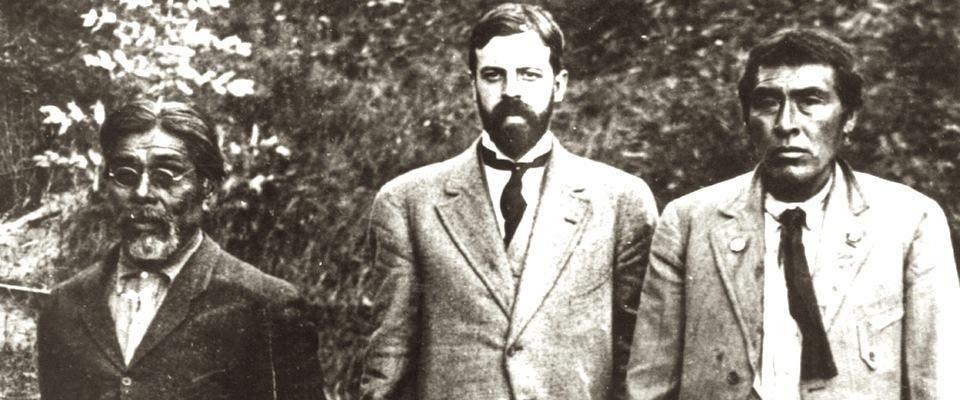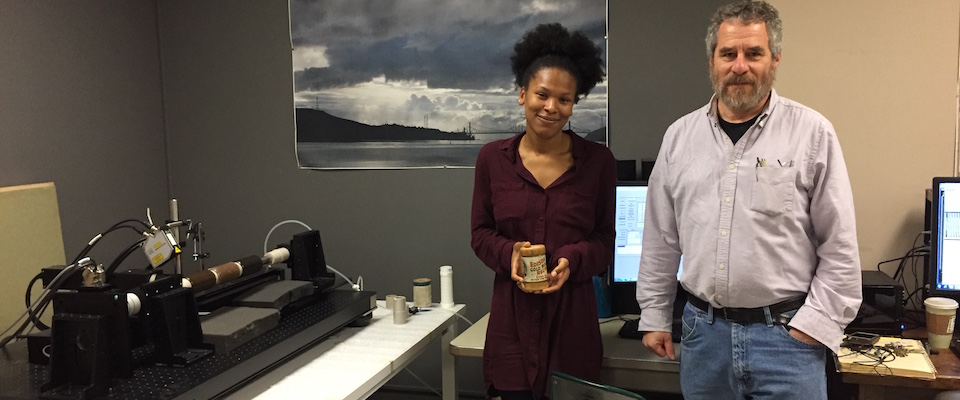Using today’s technology in unexpected ways
A linguist and a physicist walking into a room may sound like the start of a joke, but there’s nothing funny about the collaboration between Carl Haber, a physicist at Lawrence Berkeley National Laboratory, and Berkeley linguist Andrew Garrett. The two are capturing and restoring sound from wax cylinders at the Hearst Museum of Anthropology.
Nine years ago, Haber heard a radio program about the difficulties the Library of Congress was having preserving their vast collection of audio recordings, many too fragile to handle and play back. “I’m not an audiophile,” says Haber, but explains that he thought he might be able to restore sound using technologies, including robotics and digital imaging, developed for detecting subatomic particles. By 2004 Haber and colleague Vitaliy Fadeyev had developed a technique that uses what he says is “essentially digital photography” to take pictures of the lateral grooves in a shellac or lacquer disc (some very old records). The images could then be analyzed and played back from a computer. Essentially, Haber had found a way to play fragile discs without ever touching them.
But he didn’t stop there. Before flat discs, which contain the sound information in the horizontal wiggles of the groove, there were wax cylinders, developed by Thomas Edison in the late 1800s. Like records and discs, the cylinders can get scratched and dirty, but they are also uniquely vulnerable to a type of mold that literally eats them away. Haber explains that often these fragile recordings are also historically significant and rare. To get the sound information from them, the depth of the groove is crucial, which means Haber had to find a way to scan in three dimensions.
Collaborator Garrett says that the results so far are “pretty remarkable.” He compares analog versions, such as cassette tape, of the 100-year-old recordings—made decades ago when the wax cylinders were still playable—with Haber’s new versions. The old versions, recordings of California Indian stories and songs, which Garrett has studied extensively for his research on the Yurok language, tend to have a constant crackly background noise. This noise can make it difficult to distinguish the words in places, or it can just be a nuisance. Although Haber stresses that the 3D method is still a work in progress, the background noise is noticeably muted in his new versions, and Garrett is optimistic about the technique’s potential. “One goal would be to actually be able make out more of the content…. And I think the other goal would be to make it a pleasant enough listening experience that a nonlinguist would be willing to listen to it,” says Garrett, noting that much of the Hearst’s collection is of songs, something the early ethnographers couldn’t write down like stories. “If Carl’s device could interpret the grooves in such a way that most of that kind of continuous noise would go away, then you’d have a song there that somebody could actually learn. Even people who are not necessarily into language would love to be able to learn these songs or hear them,” he says.
The core of the Hearst Museum’s collection consists of 2,713 cylinders, many of which record languages no longer spoken or with very few speakers left. Haber’s method could allow tribe members and the community to learn traditional songs; more important, it could make all of the words in stories understandable, adding to knowledge of California Indian languages and culture.



















